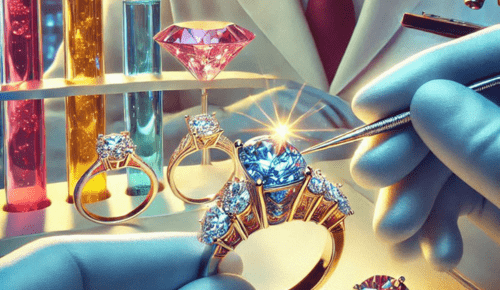How Cultural Heritage Shapes Lab Diamond Ring Trends is a fascinating exploration of how traditions and values influence modern jewelry designs. Diamond rings, often regarded as symbols of love and commitment, have a rich cultural legacy. As lab-grown diamonds gain popularity for their ethical and sustainable appeal, the interplay between cultural heritage and contemporary trends becomes more evident. Designers like Lily Arkwright are blending traditional influences with innovative designs, reflecting how deeply rooted cultural factors continue to shape preferences in lab diamond ring designs across the world. This blend of tradition and innovation reveals how cultural heritage continues to influence modern jewelry choices.
Cultural heritage plays a vital role in the way people perceive and choose jewelry, including lab-grown diamond rings. In many cultures, diamonds have been used to signify milestones, express wealth, and demonstrate social status. Lab diamond rings are no exception, carrying forward these meanings while incorporating modern aesthetics. For example, in South Asian cultures, intricate patterns and vibrant gemstones are often favored, reflecting the region’s history of ornate jewelry. Similarly, Western preferences for minimalistic and solitaire designs can be traced back to Victorian-era simplicity and elegance.
Globalization has allowed cultures to borrow and reinterpret jewelry traditions. As a result, lab diamond ring trends now often feature cross-cultural elements. A prime example is the growing popularity of halo settings, which originated in Europe but are now embraced worldwide. These settings echo the importance of embellishment in various cultures while appealing to contemporary tastes for brilliance and uniqueness.
Ethical concerns and sustainability are significant factors driving the adoption of lab-grown diamonds, and cultural heritage influences this shift. For instance, Indigenous communities around the world emphasize respect for nature and ethical practices, values that align with the environmentally friendly aspects of lab diamonds. Buyers with a strong connection to their cultural identity often gravitate toward rings that embody these principles, marrying tradition with modern ethical standards.
Moreover, regional trends often highlight specific preferences shaped by cultural history. In Japan, for example, subtle and understated designs reflect the country’s aesthetic values of simplicity and harmony. On the other hand, Middle Eastern buyers might prefer bold and elaborate designs that echo the grandeur of their artistic heritage. Lab diamond rings cater to these diverse preferences, offering customizable options that respect and celebrate individual cultural identities.
Technology also bridges the gap between tradition and modernity. Customization has become a major trend in the lab diamond industry, allowing individuals to incorporate elements of their heritage into ring designs. Whether it’s engraving cultural symbols, using traditional patterns, or blending gemstone colors significant to their ancestry, lab diamond rings provide a canvas for cultural expression.
Social media has amplified the visibility of these culturally inspired trends, enabling people to showcase their unique heritage through personalized lab diamond rings. Platforms like Instagram and Pinterest are brimming with ideas that blend cultural motifs with contemporary styles, creating a dynamic space where heritage and innovation coexist.
In conclusion, how cultural heritage shapes lab diamond ring trends is a testament to the enduring influence of tradition in modern jewelry. Diamond rings remain timeless symbols of love and commitment, and their evolving designs reflect the diverse cultural identities of wearers around the world. By combining ethical practices, modern technology, and cultural expression, lab diamond rings honor the past while embracing the future.

